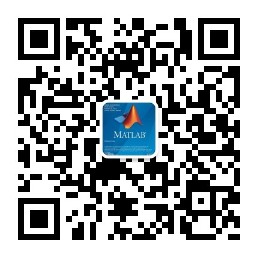博文
[转载]【信息技术】【2005.07】生物医学信号与图像处理
||
本文为捷克布拉格化学技术研究所(作者:Victor Musoko)的博士论文,共36页。
本论文的主要目的是研究基于离散小波变换(DWT)的去噪算法,该算法可以成功地应用于增强二维(2-D)图像切片和三维(3-D)图像立体的多维磁共振(MR)噪声数据集。噪声消除或去噪是图像处理中的一项重要任务,用于恢复被噪声破坏的信号。磁共振图像中的随机噪声是由仪器中的电子元件产生的。本文提出了一种可用于生物医学图像处理的新方法,即二维图像分解、阈值分割重建以及磁共振图像立体的三维去噪。本文主要介绍了复小波变换在磁共振图像去噪中的研究和应用,将展示使用分水岭变换和基于小波特征提取的图像纹理分割,以通过具有竞争性的神经网络对图像纹理进行分类。
本论文的另一个感兴趣的主题是使用一些MATLAB函数可视化二维MR切片和三维图像立体。这样就可以在不需要特殊镜片的情况下可视化图像,尤其是对于三维图像量,也不需要使用一些专业的特别昂贵的软件程序。所提出的算法主要应用于磁共振成像(MRI)领域,作为一种主要用于医学领域的成像技术,可以产生高质量的人体软组织图像。了解MRI数据集的可视化,即2-D图像切片或3-D图像立体,对医生来说至关重要。
本文介绍了用于生物医学图像分析和处理的基本数学工具(离散傅立叶变换DFT和DWT)理论。DWT在磁共振图像去噪中起着越来越重要的作用。三维数字图像处理,特别是三维离散小波变换,是一个发展迅速的研究领域,在生物医学、地震学、遥感、材料科学等许多领域有着广泛的应用。三维离散小波变换算法是对现有二维算法的扩展。利用均方误差(MSE)、峰值信噪比(PSNR)和视觉观感等不同的指标,定量评价了该算法的性能。根据噪声类型和小波变换,对相关结果进行了讨论。小波特性使其具有良好的时间和频率局部化特性,非常适合于处理生物医学信号(EEG、ECG等)和图像(MR)等非平稳信号。传统的傅立叶变换只提供信号的频谱信息,因此不适用于非平稳信号的分析。
本文主要分析并实现了剑桥大学Nick Kingsbury博士提出的一种新的复小波变换(CWT)。对小波变换的双树实现进行了描述,并对其相对于经典小波变换的优点进行了分析和讨论,然后将此增强变换应用于MRI数据分析。实验结果表明,复小波去噪算法能有效地提高有噪磁共振成像数据集的PSNR。
论文的最后部分主要研究了分水岭变换用于分割磁共振图像的基本原理。在对模拟纹理进行验证后,将其用于人体膝关节磁共振图像的分割。该算法可以很容易地分辨出包括肌肉、骨骼和组织在内的膝关节解剖区域。分割是医学应用中的一个重要领域,可用于疾病诊断,如检测脑肿瘤细胞。
基于图像小波分解的人工纹理分析是纹理分类的一种预处理方法,利用小波系数的均值或标准差得到小波特征。对于纹理的分类,这些特征向量构成了有竞争力神经网络的输入。本文还提出了自己的类边界评价算法。纹理分析在遥感、卫星成像、医学图像处理等领域有着广泛的应用,最后对今后的研究工作进行了总结和建议。本文还介绍了利用Matlab网络服务器(MWS)实现生物医学图像在网络上的去噪和可视化。
The main goal of the thesis is to show thede-noising algorithms based upon the discrete wavelet transform (DWT) that canbe applied successfully to enhance noisy multidimensional magnetic resonance(MR) data sets i.e two-dimensional (2-D) image slices and three-dimensional(3-D) image volumes. Noise removal or de-noising is an important task in imageprocessing used to recover a signal that has been corrupted by noise. Randomnoise that is present in MR images is generated by electronic components in theinstrumentation. The thesis present both 2-D image decomposition, thresholdingand reconstruction and the 3-D de-noising of MR image volumes using the DWT asa new approach which can be used in the processing of biomedical images. Anovel use of the complex wavelet transform for the study and application in thede-noising of MR images is presented in the main part of the thesis.Segmentation of image textures using a watershed transform and a wavelet basedfeature extraction for classification of image textures by a competitive neuralnetwork will be shown.
Further topic of interest to be presentedin the thesis is the visualization of 2-D MR slices and 3-D image volumes usingsome MATLAB functions. This makes it possible to visualize images without theneed of special glasses especially for 3-D image volumes or using specialexpensive software programs which will need some bit of expertise. Theapplication of the proposed algorithms is mainly in the area of magneticresonance imaging (MRI) as an imaging technique used primarily in medical fieldto produce high quality images of the soft tissues of the human body. An insightto the visualization of MRI data sets i.e. 2-D image slices or 3-D imagevolumes is of paramount importance to the medical doctors.
The thesis presents the theory of thefundamental mathematical tools (discrete Fourier transform (DFT) and DWT) thatare used for the analysis and processing of biomedical images. DWT plays anincreasingly important role in the de-noising of MR images. 3-D digital imageprocessing, and in particular 3-D DWT, is a rapidly developing research areawith applications in many scientific fields such as biomedicine, seismology,remote sensing, material science, etc. The 3-D DWT algorithms are implementedas an extension of the existing 2-D algorithms. The performance of thede-noising algorithms are quantitatively assessed using different criterianamely the mean square error (MSE), peak signal-to-noise ratio (PSNR) and thevisual appearance. The results are discussed in accordance to the type of noiseand wavelets implemented. The properties of wavelets make them special in thatthey have a good time and frequency localization which make them ideal for theprocessing of non-stationary signals like the biomedical signals (EEG, ECG,..)and images (MR). The traditional Fourier transform only provides the spectralinformation of a signal and thus it is not suitable for the analysis ofnon-stationary signals.
A novel complex wavelet transform (CWT)which was introduced by Dr. Nick Kingsbury of Cambridge University is analyzedand implemented in the main part of the thesis. The description of the dualtree implementation of CWT is followed by its analysis and discussions devotedto its advantages over the classical wavelet transform. This enhanced transformis then applied to MRI data analysis. Experimental results show that complexwavelet de-noising algorithm can powerfully enhance the PSNR in noisy MRI datasets.
The further part of the thesis devoted tothe description of basic principles of a watershed transform for segmentationof MR images. After its verification for simulated textures it is used forsegmentation of a human knee MR image. The anatomical regions of the knee whichincludes the muscle, bone and tissue can be easily distinguished by thisalgorithm. Segmentation is an important field in medical applications and canbe used for disease diagnosis e.g. detecting brain tumor cells.
Texture analysis of artificial texturesbased on image wavelet decomposition is considered as a pre-processing methodfor the classification of the textures. The wavelet features are obtained byusing the mean or the standard deviations of the wavelet coefficients. For theclassification of the textures these feature vectors form the inputs to acompetitive neural network. The work also presents own algorithms for classboundaries evaluation. Texture analysis is used in a variety of applications,including remote sensing, satellite imaging, medical image processing, etc.Finally, I conclude and give suggestions for future research work. The thesisalso gives a review of the de-noising and visualization of biomedical images onthe web using the Matlab Web Server (MWS).
更多精彩文章请关注公众号:
https://blog.sciencenet.cn/blog-69686-1205602.html
上一篇:[转载]【无人机】【2005.12】低雷诺数无人机的螺旋桨性能测量
下一篇:[转载]【信息技术】【2011.12】【含源码】移动通信系统中语音信号的压缩感知